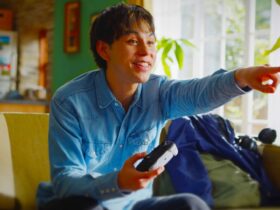There are lots of remarkable things to say about Alan Wake 2, but the most remarkable of all might be its budget. The sequel was made for about 75 million USD when totaling both development and marketing. While I could bang the “games cost too much to make” drum all day, Alan Wake 2 was produced for a very modest budget when compared to the majority of triple-A blockbusters these days.
Budget aside, Alan Wake 2 also stands out thanks to its consistent use of full-motion video (FMV) that employs real actors and sets while blending them with in-game models and assets. Considering the financial budgeting woes we’ve been hearing so much about lately, I think more games should use them.
The Cost of Realism
Triple-A gaming is held back by the stubborn insistence of studios that titles need to “look real.” It’s something of a chicken-and-the-egg situation. Gamers demand hyper-realistic graphics before they even consider picking up games, which in turn causes studios to spend millions on development which frequently involves more and more expensive and time-consuming graphical techniques to bring their projects to life.
While Alan Wake 2 certainly looks like many other triple-A games with its highly detailed environments and characters, most of its cutscenes didn’t require giant teams of animators and artists since Remedy instead opted for FMV. “What’s more realistic looking than real actors on a real set with real lighting? Nothing,” Remedy seems to say.
I’m not suggesting that shooting a few short films worth of cutscenes doesn’t require hard work or a substantial budget. Of course it does, there’s plenty that goes into a production like this, but once it’s all filmed, the costs of editing and refining live-action footage are significantly lower than having to create an entire scene digitally.
Remedy famously made use of FMV in Quantum Break, which split its playable portions up with what was essentially a full-length television series between each level. It was neat.
What’s more, FMV helps pull off a classic film trick that filmmakers have been using for years to help “sell” realism. By putting scenes with real actors next to scenes with lifelike digital ones, the player’s mind will fill in some of the blanks. Especially when looking at digital recreations of actors they’ve seen doing significant amounts of subtle emoting previously, emoting that’s very difficult to convey in an animated format. It makes the animation seem better than it actually is.
It’s the technique used by Steven Spielberg in Jurassic Park when he cuts from a scale replica of a dinosaur’s leg to a fully digital model. That film is several decades old and it still looks incredible, so imagine what we might be saying about Alan Wake 2 even a few years from now.
The Unique Look of Alan Wake 2
I’ve never played a game that looks quite like Alan Wake 2 with the way it blends FMV into its interactive sections.
Throughout the game, players encounter whispers of Alex Casey, the fictional detective from Alan Wake’s series of novels., But instead of appearing as a little spinning record player on the bottom of the screen, Alan Wake 2 takes a much different approach to its audio logs. An FMV of Sam Lake (the game’s director and face model for Casey) is overlaid onto the scene as players explore the Dark Place.
The FMV visuals are incredibly simple and could likely be reproduced with a single light, camera, and actor, but each of these moments still manages to be hauntingly beautiful. It’s an effect that stands out as truly unique in a game filled with memorable and distinct elements. There are small FMV sequences moments like this across the entire experience, adding a layer of visual brilliance I won’t soon forget.
Alan Wake 2 owes much of its DNA to the filmmakers who inspired it. Artists who found a way to make something visually resonant while working with tight budgets and studio mandates. The game found a way to be scrappy as well with a budget half of many of the games it was competing against for the “Game of the Year” award at the 2023 Game Awards.
Just as Remedy learned how to be scrappy with its budget while still delivering a formidable triple-A experience from the filmmakers that inspire its work, I hope other AAA studios can learn the same lessons from Remedy.














Leave a Reply